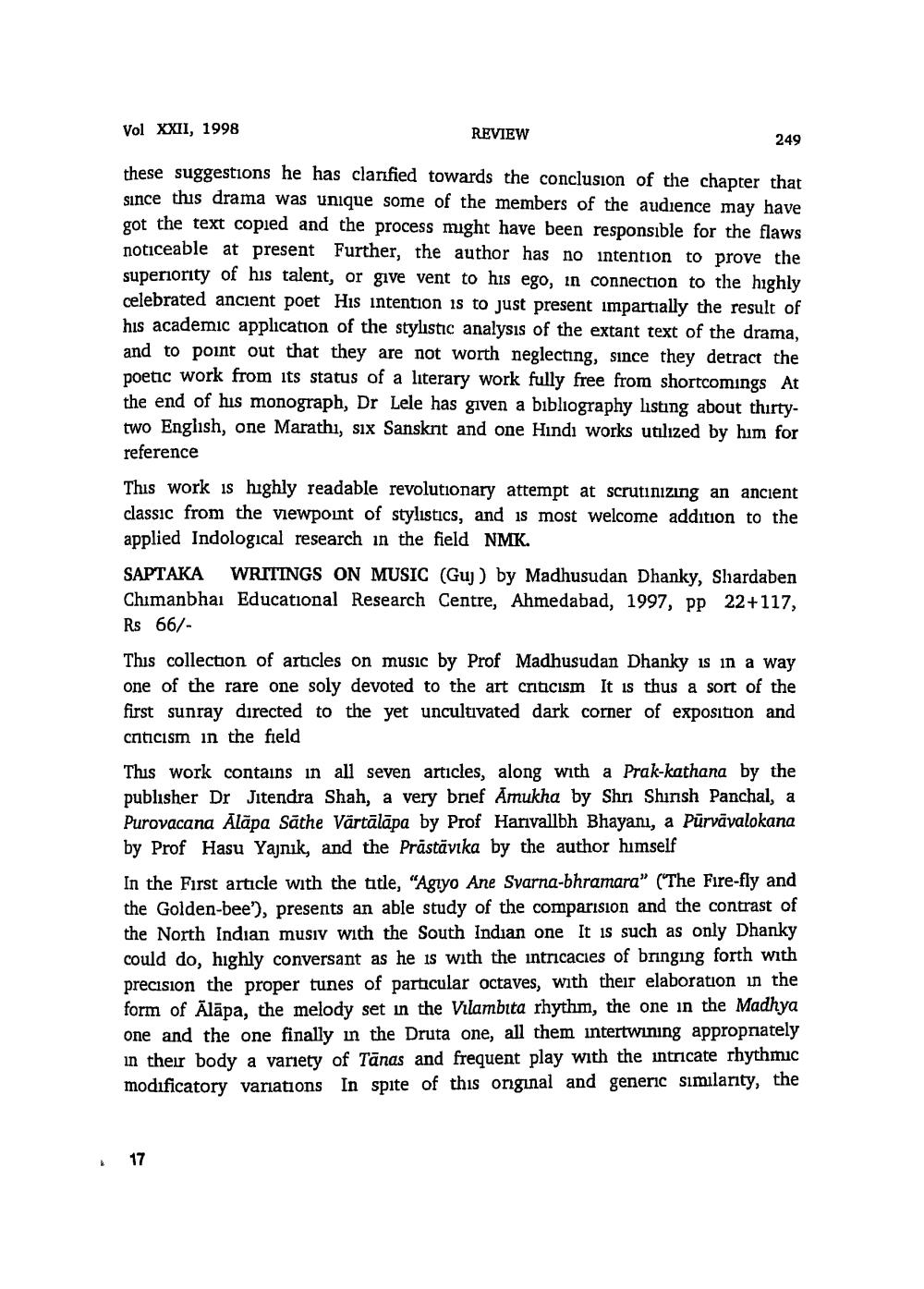________________
&
Vol XXII, 1998
these suggestions he has clarified towards the conclusion of the chapter that since this drama was unique some of the members of the audience may have got the text copied and the process might have been responsible for the flaws noticeable at present Further, the author has no intention to prove the superiority of his talent, or give vent to his ego, in connection to the highly celebrated ancient poet His intention is to just present impartially the result of his academic application of the stylistic analysis of the extant text of the drama, and to point out that they are not worth neglecting, since they detract the poetic work from its status of a literary work fully free from shortcomings At the end of his monograph, Dr Lele has given a bibliography listing about thirtytwo English, one Marathi, six Sansknt and one Hindi works utilized by him for
reference
REVIEW
249
This work is highly readable revolutionary attempt at scrutinizing an ancient classic from the viewpoint of stylistics, and is most welcome addition to the applied Indological research in the field NMK.
SAPTAKA WRITINGS ON MUSIC (Guj) by Madhusudan Dhanky, Shardaben Chimanbhai Educational Research Centre, Ahmedabad, 1997, pp 22+117, Rs 66/
This collection of articles on music by Prof Madhusudan Dhanky is in a way one of the rare one soly devoted to the art criticism It is thus a sort of the first sunray directed to the yet uncultivated dark corner of exposition and criticism in the field
This work contains in all seven articles, along with a Prak-kathana by the publisher Dr Jitendra Shah, a very brief Amukha by Shri Shinsh Panchal, a Purovacana Aläpa Sathe Vārtālāpa by Prof Harivallbh Bhayanı, a Pūrvävalokana by Prof Hasu Yajnik, and the Prästävika by the author himself
17
In the First article with the title, "Agiyo Ane Svarna-bhramara" (The Fire-fly and the Golden-bee"), presents an able study of the comparision and the contrast of the North Indian musiv with the South Indian one It is such as only Dhanky could do, highly conversant as he is with the intricacies of bringing forth with precision the proper tunes of particular octaves, with their elaboration in the form of Äläpa, the melody set in the Vilambita rhythm, the one in the Madhya one and the one finally in the Druta one, all them intertwining appropnately in their body a variety of Tänas and frequent play with the intricate rhythmic modificatory variations In spite of this onginal and generic similarity, the




